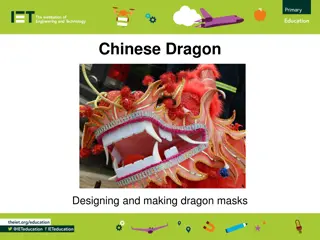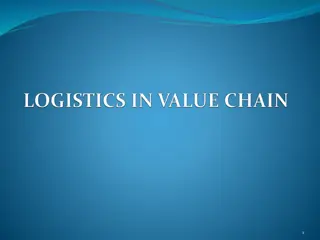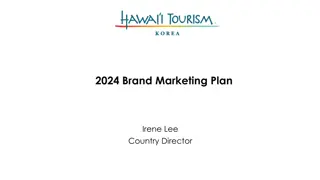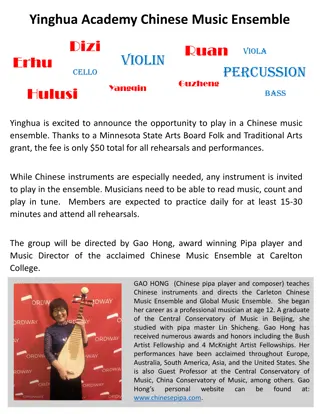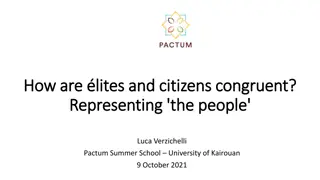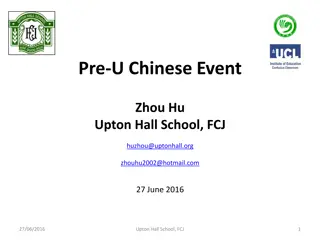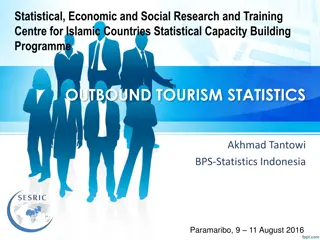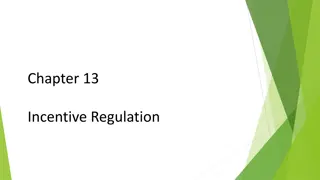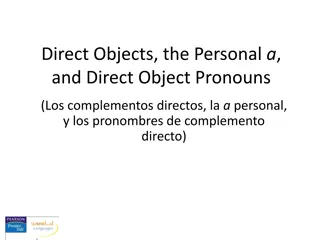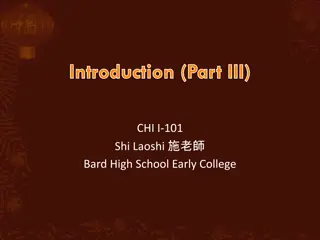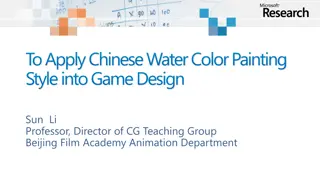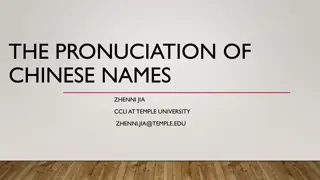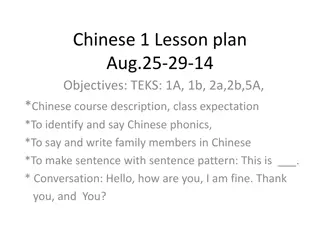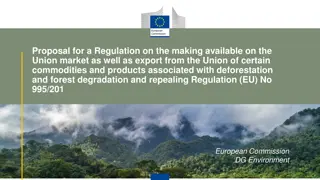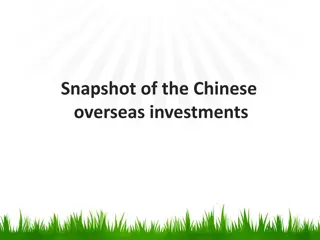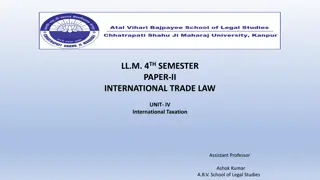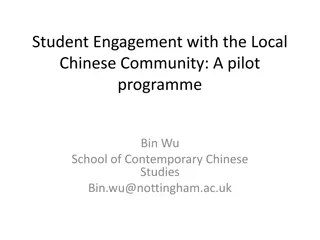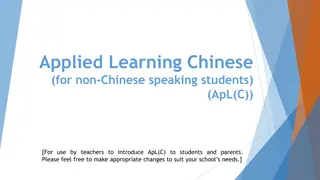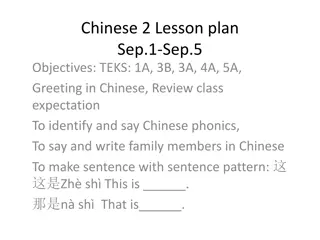Chinese Outbound Direct Investment (CODI) Regulation and Representation
The study explores the changing regulatory landscape of Chinese Outbound Direct Investment (CODI) and its impact compared to other investors. It delves into the evolution of government policies from highly restrictive to more proactive roles, examining the challenges and goals of the present framework. Key topics include policy changes, comparative statistics analysis, cases of private and state investment, and the current approval process structure.
Download Presentation

Please find below an Image/Link to download the presentation.
The content on the website is provided AS IS for your information and personal use only. It may not be sold, licensed, or shared on other websites without obtaining consent from the author. Download presentation by click this link. If you encounter any issues during the download, it is possible that the publisher has removed the file from their server.
E N D
Presentation Transcript
Chinas Outbound Direct Investment (CODI): Regulation and Representation Min Ye
The Topic: hot but understudied In the West, fear of rising CODI, state capitalism In China, unsure how to assess CODI; critics abound. Few studies: Cai (1998) and Sun and Hong (2006), CODI similar to other investors; gov t promotion is positive to CODI. The articles reception so far: MCS & Oriental Morning ( ); in E. Asia and China
Main Questions How has the Chinese regulatory regulation over CODI changed and what are its effects? Comparison with other investors Experience of China s private companies and SOEs
Outline of the talk Policy Change Analysis of Comparative Statistics Cases of Private and state Investment
Govt Policy regarding CODI 1978-1989: highly restrictive 1992-1997: de facto loosening 2000-2005: going out policy (zou chu qu) Govt/leaders statement & reports Vague and contradictory Witnessed major increases in CODI 2005-2010: active state role
The Current Framework Late 2004 State Council Decision & 2009 Ministry of Commerce Regulation Goals: making the approval process more institutionalized, transparent, and effective Problems: multi-step, complicated process Narrowing goals: resources promotion; state biases Centralized approval: from supervising agency to NDRC or MOC Implementation: gov t access is critical
Current Policy (continue) Three-tiered approval: Top-level: State council, above $200 million (resources) & above $50 million (non resources) National-level: NDRC & MOC ($30-200 million; $10-50 million) Provincial-level: local branches of NDRC & MOC 2009 change (SOEs under $50 million) Processing time: 10-15 days 3 business days Finance: development funds; development banks; commercial banks; corporate saving
Outcome: summary Imbalance between private and state investment: 2008, central SOEs, 85%, 0.3% by private companies Low manufacturing shares: unlikely manufacturing spillover to other countries Performance: two thirds losing money or breaking even
Comparison with other Asian investors: Japan, South Korea, and India ?
Unique features Hong Kong s shares in CODI, %
CASES OF PRIVATE AND STATE INVESTORS
Cases: Private Companies & Barriers Strength of private companies in China Imperative of investing abroad Yet, low representation in CODI Policy & irregular approval Feiyue: Small appliances maker in Zhejiang CHINT: electrical machinery maker in Zhejiang Avoiding approval Tengzhong: automaker in Sichuan Lengthy, non action by approval agencies, de facto rejection
Barriers to Private Investment SOE control of commodity market excludes private investors Mr. Liu s experience: iron ore acquisition CHINT: electrical equipment SOE advantages overseas additionally disadvantage private investors CHINT Andong Oil Mr. Mi: water machinery Long-term disadvantage: credit; human talent; informal connection
State companies: Diverse Centrally-affiliated, resources-based SOEs: Large, local SOEs: active and interventionist local governments Other SOEs: disincentives to invest abroad Political risks, few incentives for CEOs to promote outbound investment Short-tenure of managers Domestic market monopoly why go abroad?
Conclusions & implications There is a growing trend of state capitalism in China Private entrepreneurs & informal coping strategy (Tsai 2005, 2006) Challenge to Western theory of investment and late development Patterns may differ Effect may be different to host society


